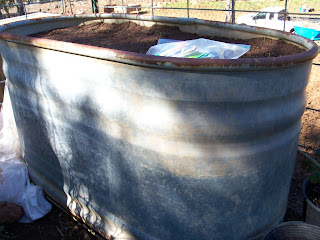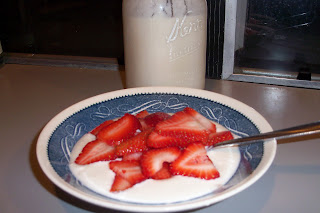It's still early to be planting tomatoes here as we're still getting frosts at night. Actually, we can get frosts pretty much any day of the year. After early June though, it's a little less likely. We've established that I LOVE to plant things and I have a way to get a bit of an early start. Not a super early start. Just a couple of weeks.
First, start with a pretty established transplant. I like a fairly tall transplant. Dig a hole about 12 to 18 inches deep. Basically, the depth of the container and part way up the stem of the tomato.
Remove lower leaves of the transplant close to the stem, leaving the top 2 to 3 leaves intact.
This is what the stem will look like after it's lower leaves are removed.
Cover root ball and stem area with the soil.
Place tomato cage over the transplant. Water tomato.
Place plastic "Season Starters" (also known as "Walls of Water") over the tomato cage. Fill the tubes with water. The sun warms the water through the plastic making the environment inside the tubes like a little Greenhouse for your plant.
The very last thing I do is cover the entire thing with "floating row covers". You can cover on nights that frosts are expected then uncover the next morning. I like to leave the cover on until either:
- the weather gets warm consistently, or
- The plant reaches the top of the "Season Starter"
The nice thing about "floating row covers" is they not only protect from frosts, but they are light enough to let sunlight and water through. It also keeps the plants a little warmer which helps plants grow faster. Where we live, I need all the help I can get! Oh, by the way, Look at what we woke up to this morning.
That's right. It's snow!






















